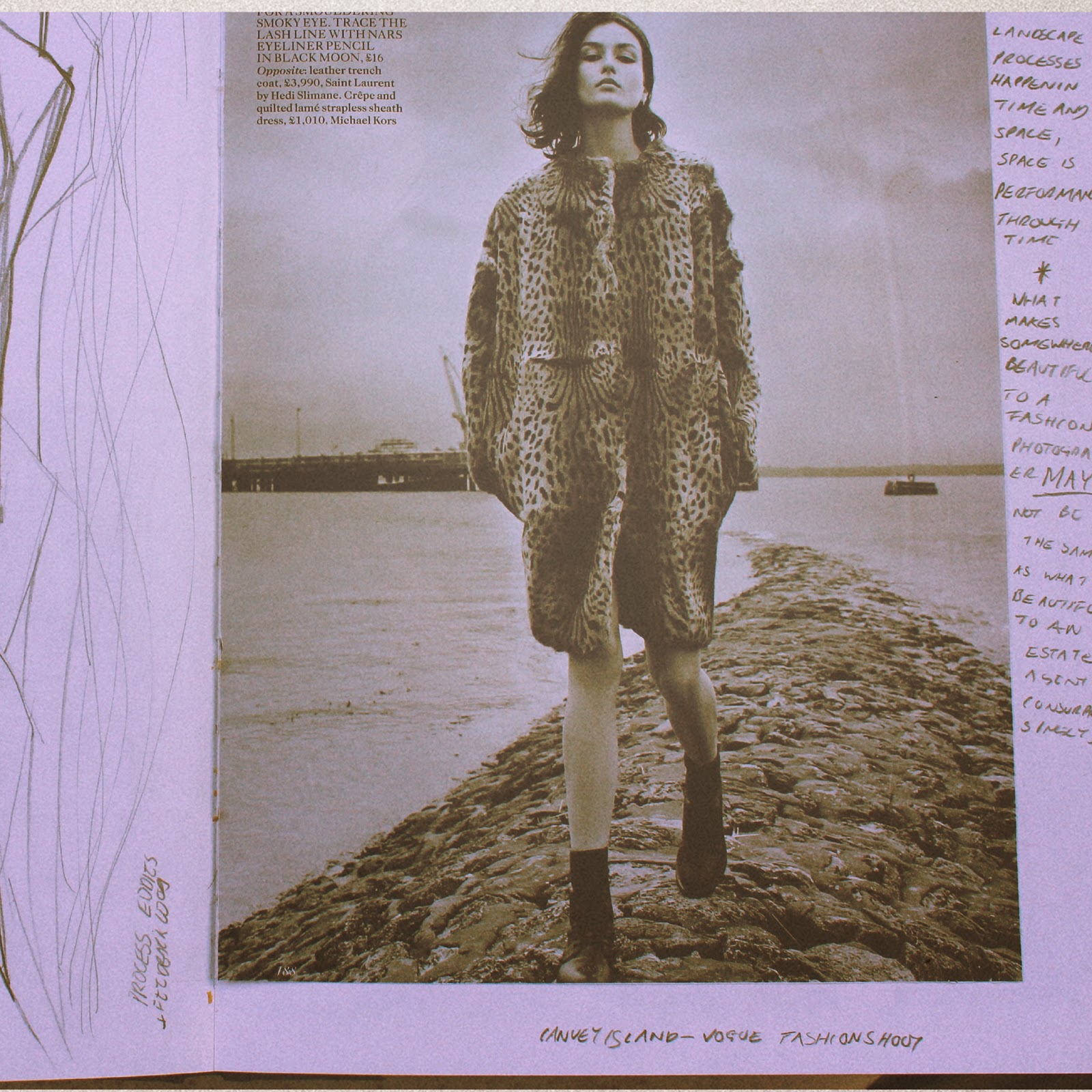In November 2013 UK vogue decided
to use Canvey Island as the location for a fashion shoot. The spread was titled
Somewhere Girl- Be Carried Away by the
Tides of the Season and featured a solitary model expertly shot in a
variety of implausible locales around Canvey’s sea front.
The choice of location was perhaps
not especially remarkable. The juxtaposition of the glamorous world of fashion
against the mundanity of a fairly typical British seaside resort in fairly
typical British decline serves the art director’s goal of emphasising the
aspirational aspect of buying and wearing expensive clothing. It could be seen
as yet another example of the fetishisation of entropy, with its antecedents in
the ready-made-ruins of the picturesque garden through to the hyper
documentation of central Detroit’s decline via Bernard Tschumi’s 1970s Advertisements for Architecture (“the
most architectural thing about this building is the state of decay in which it
is [sic]”)...though were that the intention the occidental jetty may have been
a better choice of shooting location.
However, what this vapid and ephemeral fashion shoot emphasises is the way in which landscape is defined by activity. A thorough survey, a psychogeographic exploration of the temporal and historical currents running thorough the site, even GIS- do these data gathering exercises do anything other than build upon existing preconceptions in the designer’s mind? Preconceptions that can be swept away by the actions of an individual or group with their own agenda.
A landscape can be a habitat or a golf course or a playground... It can also be the location for a fashion shoot, a crime scene or a battlefield... or all of these things. What defines space is what happens there, or in the words of Albert Camus: “Sense of space is not something that you feel, it’s something that you do.”
A landscape architect will design space with some concept of programme, perhaps defined by the brief and augmented by their own imagination. But once it is constructed, design intent is revealed to be illusory: on top of the layers imported from AutoCAD and Photoshop the user superimposes their own ideas of how the designed space is to be occupied and experienced.
So too in this post: the landscape architect’s notebook, full of oblique narrative and esoteric references, is laid bare... Only to be trampled on by someone else’s vision of what this island means.




